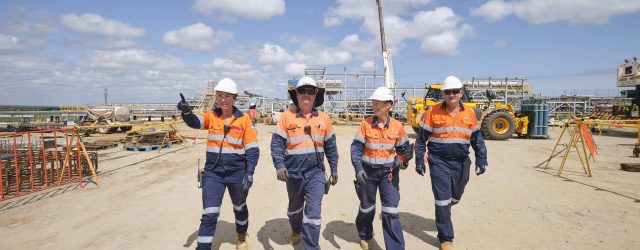Fixed price not value
Posted: 8th February 2023
Posted in: Blog

Posted: 8th February 2023
Posted in: Blog
It seems that Clough’s administrators have quickly learned construction’s dirty little secret: the commercial model for major construction projects is broken and not benefitting anybody, least of all the industry itself.
The nature of construction is that contractors and subcontractors price projects months before actual costs are known. They are given only a few months to quantify complex risks on multi-billion-dollar projects and unsurprisingly, despite their best efforts, there is often a difference between the initial budget and the actual cost. In the current inflation environment, that difference can be huge.
Who do you think wears this cost escalation? By default, it’s the contractor. Now you might expect contractors to simply build some ‘fat’ into their budgets to account for possible price rises. You’d be right, but here’s rub. At the tender box, clients still focus obsessively on one criteria—lowest price. This sets up a perverse incentive for contractors to build in as little fat as possible to keep their bid as low as possible and give themselves the best chance of winning.
In effect, the winning bid is the one willing to take the biggest gamble on the risk outcome. At any point in the cycle, there is always someone willing to take a less-than-prudent risk. So we get a race to the bottom, non-existent profit margins, and an adversarial approach to contract management.
No wonder construction firms account for 26 per cent of administrations on a share of only 17 per cent of all businesses. No wonder that construction productivity is worse now than it was thirty years ago. It’s a brutish game of survival when it should be about producing the best possible infrastructure for the taxpayer.
Based on productivity alone, neoliberalism in the construction sector has failed. The abolition of minimum fee scales for construction professional services only served to commoditise and cheapen highly specialist skills. A focus on lowest cost at the tender box has increased insolvency levels to record highs and reduced competition at all levels in the industry.
In his recent essay the Treasurer noted: “To measure what matters is also to recognise a growing consensus from economists and investors that our economies need to embed and express more than one notion of value.” This is no truer than in the construction industry. It’s time for government to disrupt the ‘lowest price’ paradigm and shift the focus to ‘best value’ outcomes. What is needed is a more collaborative commercial environment that removes unquantifiable risk as a source of competitive advantage.
But first clients need to urgently work with contractors to address contracts on foot and help prevent further insolvencies that benefit nobody. Jason Tracy, one of the administrators responsible for rescuing Clough, summed it up well when he said, “You might contractually negotiate an engineering and procurement contract (EPC) and think you’re off-risk. But of course you’re totally on-risk if something goes wrong. Because who’s gonna come knocking on the door and ask you for money to keep the project going? That is what administrators have to do.” And you can be assured that it will cost more and take longer via this route than if the client and contractor just worked together in the first instance, particularly in relation to allocation and management of risk.
Value for money to the taxpayer is more than just the lowest initial price for a project. It is this mentality, at all levels of government and in the private sector, that has driven the race to the bottom that sees the industry in such a poor state of health.
Australia’s built environment ambition gets bigger by the year. To meet it, we need a sustainable construction industry, and that means a fundamental shift to procuring based on best value not lowest initial cost at the tender box.
By Jon Davies, CEO, Australian Constructors Association